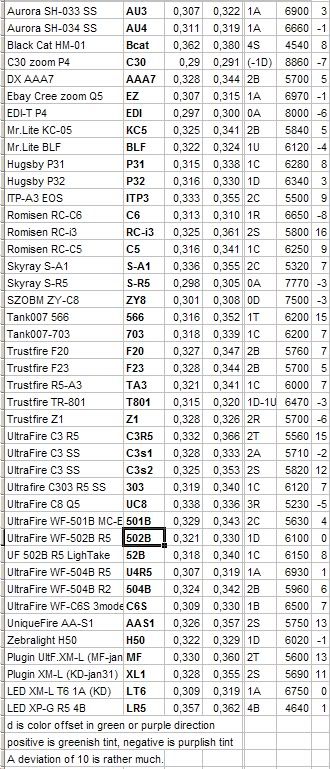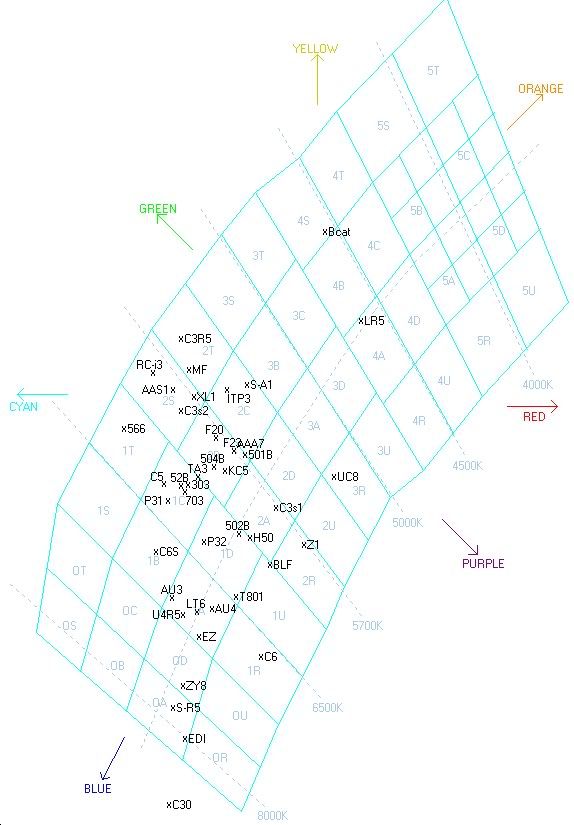(edited: More lights and converted to narrower specified ANSI bins as used for XP series.
I have made tint colour measurements on my flashlights to try verifying the diversity of tints I have observed.
Theese lights are all bought in the period sept. 2010 - Feb. 2011. The tints could very well change when new batches are sold from the vendors.
My instrument is a Colour Analyzer normally used to adjust the white point on a TV set to the right color temperature.
Here is a reference to the Cree ANSI color bins.
What is interesting is the distance from the "neutral line" through bins from 0A thru 5D (See the chart below). Cree also uses the term: 'ANSI Neutral White' for the range 3700K-5300K.
Lights that measure above this line will look a little green/yellow and below the line a little purple/red. In the sceme below, the column "d" show this tint 'offset'. A displacement of 1 can barely be seen, but 10 can easily be seen at least in comparison to another light.
[Technical:] (for the color theory interested the unit of measure here is "CIELUV". The color coordinates xc and yc from the CIE 1931 colorspace is transformed into the CIE 1976 color-equi-distant colorspace as u' and v' and the euclidian distance (90 degr. angle) delta-E to the black body curve (neutral) is calculated and multiplied by 1000. Also look at the explanation to the graph below).
As an example Romisen RC-i3 with d=16 is rather greenish and TrustFire Z1 with d= -6 is purplish although they have almost the same correlated temperature of 5800 and 5700 deg. K.
have fun.
Light symbol xc yc bin temp d


The lights are here placed in the Cree color bins.
[Technical:] The chart is transformed from the CIE 1931 color space (also used by Cree and which can be seen here) into the better 1976 color space called CIEluv (which can be seen here). The advantage with the latter is that the perceived difference between two colors (two points in the diagram) is the same all over the chart for the same distance between points. Each bin is about 6 by 6 CIEluv units (varies some).

 )).
)).